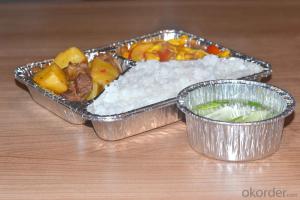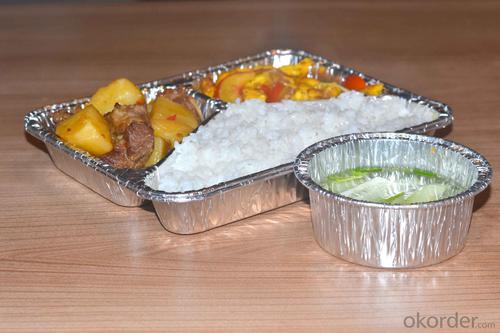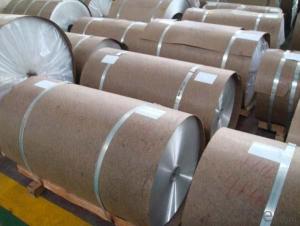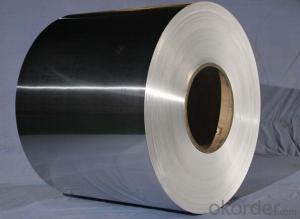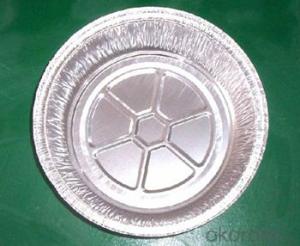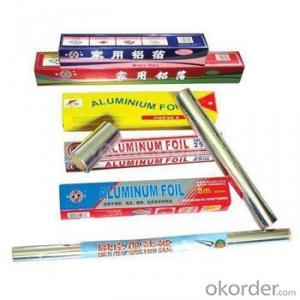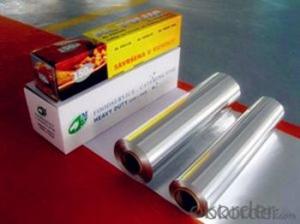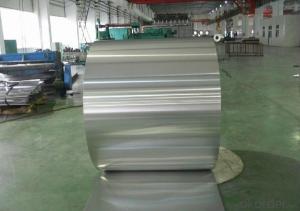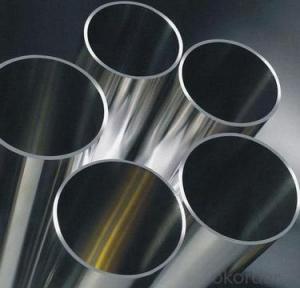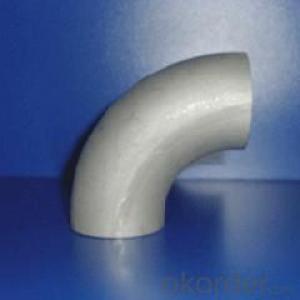80/20 Aluminum Profiles - Best Quality Aluminium Foil for Household Use
- Loading Port:
- Shanghai
- Payment Terms:
- TT OR LC
- Min Order Qty:
- 5 m.t.
- Supply Capability:
- 2000 m.t./month
OKorder Service Pledge
OKorder Financial Service
You Might Also Like
Specification
Structure of Aluminium Foil Household Foil with Best Quality Description:
Coated aluminum coil/sheet are of a wide range of colors, which gives wonderful appearance no matter in residential and commercial constructions of great exhibition centers.
The coated aluminum coil/sheet have been widely used in the fields of construction and decoration( garage doors, ceiling etc.), electronic appliances, lighting decoration, air-condition air pipes, sandwich panels and drainages etc.
Main Features of Aluminium Foil Household Foil with Best Quality:
1) High flexibility
2) Impact resistance
3) Excellent weather-proof durability
4) Anti-ultraviolet
5) High erosion resist
Images of theAluminium Foil Household Foil with Best Quality:

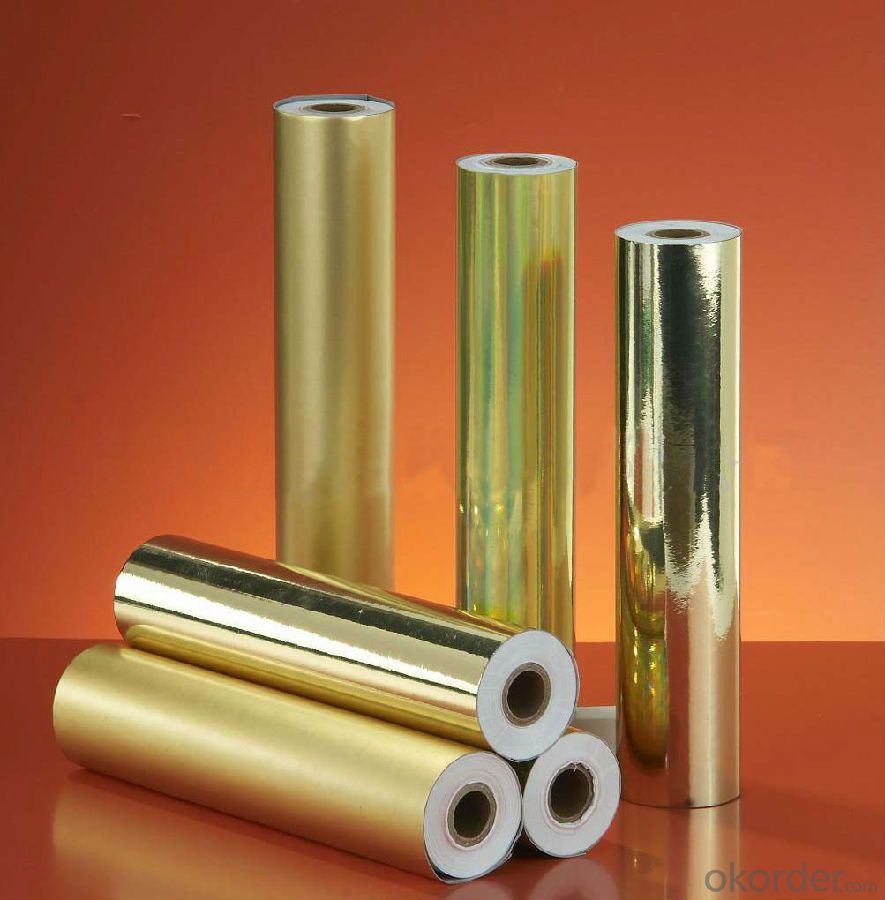
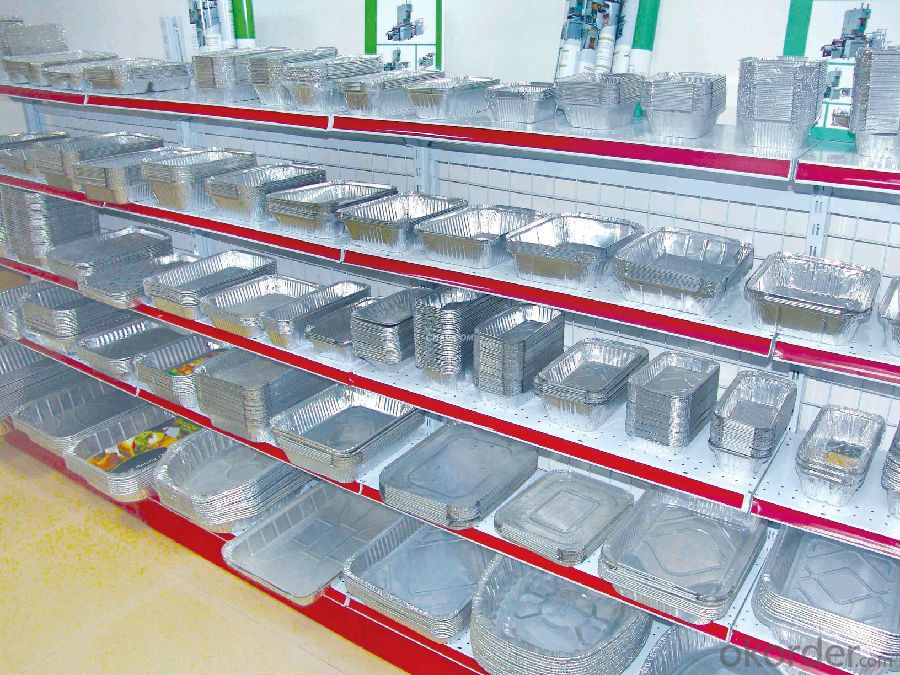
Aluminium Foil Household Foil with Best Quality Specification:
Alloy | A1100,A3003,A1050,A8011 etc |
Temper | H16,H18,H24 |
Thickness | From 0.024mm to 1.2mm |
Width | Standard width:1240mm |
Special width:1300mm,1520mm,1570mm,1595mm | |
Diameter | Standard dia:1200mm |
Interior dia:150mm,405mm,505mm | |
Weight | 2.5 T/coil,3.0 T/coil |
Coating | PE, PVDF, AC |
Surface | Embossed, mill finish, coated |
Color | AS to code RAL |
Gloss | 10-90%(EN ISO-2813:1994) |
Coating Thickness | PE: more than 18 micron |
PVDF: more than 25 micron | |
Coating Hardness (pencil resistance) | More than 2h |
Coating adhesion | 5J(EN ISO-2409:1994) |
Impact Resistance | No peeling or cracking(50 kg/cm,ASTMD-2794:1993) |
Flexibility (T-bend) | 2T |
MEK resistance | More than 100 |
FAQ:
a.What is monthly capacity
---CNBM is one stated own company and our monthly capacity is about 2000tons.
b. Now which countries do you export your goods?
---Now we export to South East Asia,Africa, North America,South America ect.
- Q: This question asks about the various types of surface treatments or finishes that can be applied to aluminum profiles.
- <p>Aluminum profiles can be coated with different types of finishes to enhance their appearance, durability, and resistance to corrosion. Some common types of coatings include: 1. Anodizing, which creates a protective oxide layer on the surface. 2. Powder coating, a durable and colorful finish applied through an electrostatic process. 3. Electrophoretic coating, a method that uses electric current to apply a paint-like coating. 4. PVDF coating, a high-performance finish with excellent weather resistance. 5. Thermal spraying, which applies a coating through a high-velocity flame. 6. Vacuum coating, a process that deposits thin layers of material in a vacuum chamber. Each type of coating has specific properties and applications, making them suitable for different environments and uses.</p>
- Q: This question asks for a comparison of the benefits and drawbacks of utilizing aluminum profiles in the construction of roofs.
- <p>Aluminum profiles in roofing offer several advantages, including their lightweight nature which reduces structural load, high corrosion resistance making them suitable for various climates, and ease of installation which can lower labor costs. They also have a long lifespan and can be recycled, contributing to sustainability. However, there are disadvantages such as higher initial costs compared to traditional materials, potential for dents or damage from impacts, and the need for regular maintenance to preserve their finish and prevent fading. Additionally, aluminum can be noisy during rain or hail, and it may not be as thermally efficient as some other roofing materials, potentially requiring additional insulation.</p>
- Q: How are aluminum profiles cut and shaped?
- Aluminum profiles can be cut and shaped using a variety of methods depending on the desired outcome. One common method is cutting the profiles using a saw. This can be done manually with a hand saw or by using a power saw such as a miter saw or a circular saw. These saws are equipped with specially designed blades that are capable of cutting through aluminum. Another method is using a CNC (Computer Numerical Control) machine. CNC machines are highly precise and can be programmed to cut and shape aluminum profiles with great accuracy. This method is often used for more complex and intricate designs. In addition to cutting, aluminum profiles can also be shaped using various techniques. One common method is bending. Aluminum profiles can be bent to a desired angle using specialized bending machines. These machines use force to gradually shape the aluminum without causing any damage or deformation. Another shaping technique is extrusion. Extrusion involves forcing the aluminum through a die to create a specific shape. This method is commonly used in the manufacturing of aluminum profiles with consistent cross-sectional shapes such as tubes or beams. Overall, the cutting and shaping of aluminum profiles require specialized tools and machinery to achieve the desired results. The specific method used will depend on the complexity of the design and the desired outcome.
- Q: How do you prevent discoloration or fading of aluminum profiles?
- To prevent discoloration or fading of aluminum profiles, there are several steps that can be taken: 1. Regular cleaning: It is essential to regularly clean aluminum profiles to remove any dirt, dust, or contaminants that can cause discoloration or fading. This can be done using a mild detergent or a specialized aluminum cleaner, followed by rinsing with clean water. 2. Avoid abrasive cleaners: Harsh or abrasive cleaners can cause damage to the surface of aluminum profiles, leading to discoloration or fading. It is important to use gentle cleaning products specifically designed for aluminum. 3. Protective coatings: Applying a protective coating to the surface of aluminum profiles can help prevent discoloration and fading. There are different types of coatings available, such as clear coats or anodizing, that provide a protective barrier against environmental factors. 4. Avoid exposure to harsh elements: Aluminum profiles should be protected from prolonged exposure to harsh elements like direct sunlight, extreme temperatures, or chemicals. These factors can accelerate the discoloration or fading process. If the profiles are installed outdoors, consider providing adequate shading or protective covers to minimize exposure. 5. Regular maintenance: Regular inspection and maintenance of aluminum profiles can help identify any early signs of discoloration or fading. Promptly addressing any issues, such as scratches or surface damage, can prevent further deterioration. 6. Proper storage: If aluminum profiles are not immediately installed, it is important to store them in a dry and well-ventilated area, away from moisture or direct sunlight. Proper storage can help maintain the integrity of the profiles and prevent premature discoloration or fading. By following these preventive measures, it is possible to prolong the lifespan and maintain the aesthetic appeal of aluminum profiles, minimizing the risk of discoloration or fading.
- Q: What are the cost considerations for using aluminum profiles?
- Some cost considerations for using aluminum profiles include the initial cost of purchasing the profiles themselves, any additional costs for custom or specialized profiles, the cost of installation and assembly, maintenance costs, and potential future costs for repairs or replacements. Additionally, the cost of aluminum profiles may vary depending on the quality and thickness of the material used.
- Q: What are the different grades of aluminum used in profiles?
- Profiles commonly use various grades of aluminum, depending on desired characteristics and intended applications. Some commonly used grades include: 1. 6061-T6: This grade, widely utilized and versatile, offers excellent strength, corrosion resistance, and machinability. It suits structural components, frames, and automotive parts. 2. 6063-T5: Renowned for its excellent extrudability, this grade is popular in architectural applications like window and door frames. It provides good corrosion resistance and is easily surface-treated or anodized. 3. 6082-T6: Similar to 6061-T6 in strength and corrosion resistance, this grade is often preferred for applications requiring higher weldability. It finds use in the transportation industry, manufacturing truck and trailer components. 4. 7075-T6: Acknowledged for its exceptional strength and high stress resistance, this grade is common in aerospace applications, including aircraft structures and missile components, where strength and lightweight properties are crucial. 5. 3003-H14: This grade is primarily chosen for its outstanding formability and corrosion resistance. It is often used for decorative applications like trim or architectural accents. These examples highlight the range of aluminum grades used in profiles, each offering unique properties and advantages across various industries. Selecting the appropriate grade is vital to meet specific requirements and performance expectations when manufacturing profiles.
- Q: Are there any fire safety considerations when using aluminum profiles?
- Fire safety considerations must be taken into account when utilizing aluminum profiles. Although aluminum is not combustible, it can still contribute to the spread and intensity of a fire. Aluminum profiles, particularly in construction or industrial settings, can act as fuel for a fire and potentially worsen its severity. One crucial consideration is the fire rating of the aluminum profiles. Fire ratings indicate how long a material can withstand fire exposure before failing. It is vital to choose aluminum profiles with appropriate fire ratings that match the specific application requirements. This guarantees that the profiles can delay the fire's spread, providing valuable time for evacuation and firefighting efforts. Another consideration is the use of suitable insulation materials. Aluminum profiles are often used in building facades, curtain walls, and other structural applications. In these cases, it is important to ensure that the insulation materials used with the aluminum profiles are fire-resistant. This prevents the fire from spreading through the building envelope and reduces the risk of structural failure. Furthermore, fire safety measures should be implemented during installation. Proper firestopping techniques should be applied to seal any gaps or penetrations around the aluminum profiles. This prevents flames, smoke, and hot gases from passing from one compartment to another, limiting the fire's spread. Regular maintenance and inspection of the aluminum profiles are also crucial for fire safety. Any damage or deterioration should be promptly addressed to prevent potential fire hazards. Additionally, adequate fire detection and suppression systems should be in place to detect and control fires in a timely manner. Overall, although aluminum profiles themselves are not combustible, it is imperative to consider various fire safety measures when using them in construction or industrial applications. By selecting suitable fire-rated profiles, using fire-resistant insulation materials, employing proper installation techniques, and conducting regular inspections, the risk of fire can be minimized, ensuring the safety of occupants and property.
- Q: What are the different machining options available for aluminum profiles?
- When it comes to aluminum profiles, there are various machining options available. The choice of technique depends on the desired outcome and the specific requirements of the project. One widely used technique is milling. It involves using a rotating cutter to remove material from the workpiece, resulting in complex shapes and features like slots, pockets, and contours. Another option is drilling, which is used to create holes in the aluminum profiles. This can be done manually or using CNC machines for precision and efficiency. Turning is a process where a single-point cutting tool is used to remove material from a rotating workpiece. It is commonly used for cylindrical or symmetrical profiles, enabling the creation of features like threads, grooves, and chamfers. For reshaping aluminum profiles, bending is the go-to process. By applying force, the profiles can be bent into the desired shape, making it ideal for architectural or structural purposes. If holes or cutouts are needed, punching is the way to go. A punch and die set are used to create openings for fasteners, connectors, or other components. Sawing, on the other hand, involves using a rotating blade to cut through the profiles. This technique is commonly used to achieve specific lengths or to separate profiles into smaller sections. Grinding is a process that utilizes an abrasive wheel to remove material and achieve surface finishing, deburring, or tight tolerances on the profile's dimensions. Each machining option has its own advantages and limitations. Factors such as the complexity of the desired shape, required precision, and material properties of the profiles should be carefully considered to determine the most suitable option for a given project.
- Q: Where is the aluminum profile market in Nanjing? Specific address, bus route
- There seems to be an aluminum profile market over the West Bridge
- Q: This question asks about the various methods employed in the production of aluminum profiles, which are long, extruded shapes made from aluminum.
- <p>Aluminum profiles are manufactured using several processes, primarily extrusion, which involves forcing aluminum through a die to create specific shapes. Other processes include casting, where aluminum is poured into molds, and rolling, used to create flat sheets or plates. Machining processes like cutting, drilling, and milling are also used for further shaping and finishing. Additionally, aluminum profiles can be fabricated through bending, which shapes the material into curves or angles, and welding, which joins pieces together. Surface treatments like anodizing, painting, or powder coating are also applied to enhance appearance and durability.</p>
Send your message to us
80/20 Aluminum Profiles - Best Quality Aluminium Foil for Household Use
- Loading Port:
- Shanghai
- Payment Terms:
- TT OR LC
- Min Order Qty:
- 5 m.t.
- Supply Capability:
- 2000 m.t./month
OKorder Service Pledge
OKorder Financial Service
Similar products
Hot products
Hot Searches
Related keywords
